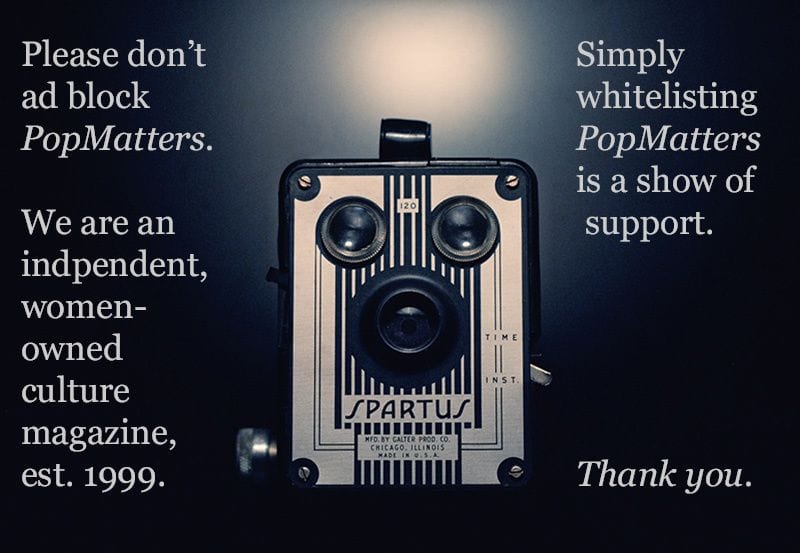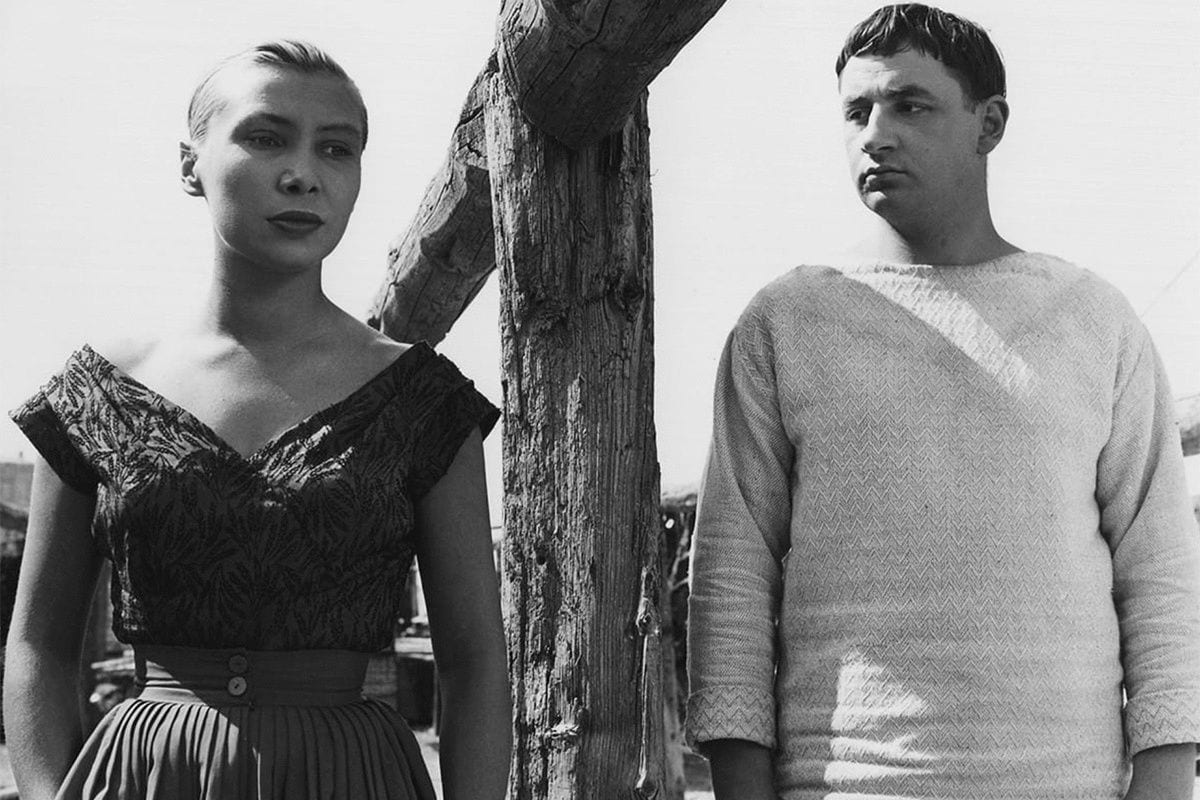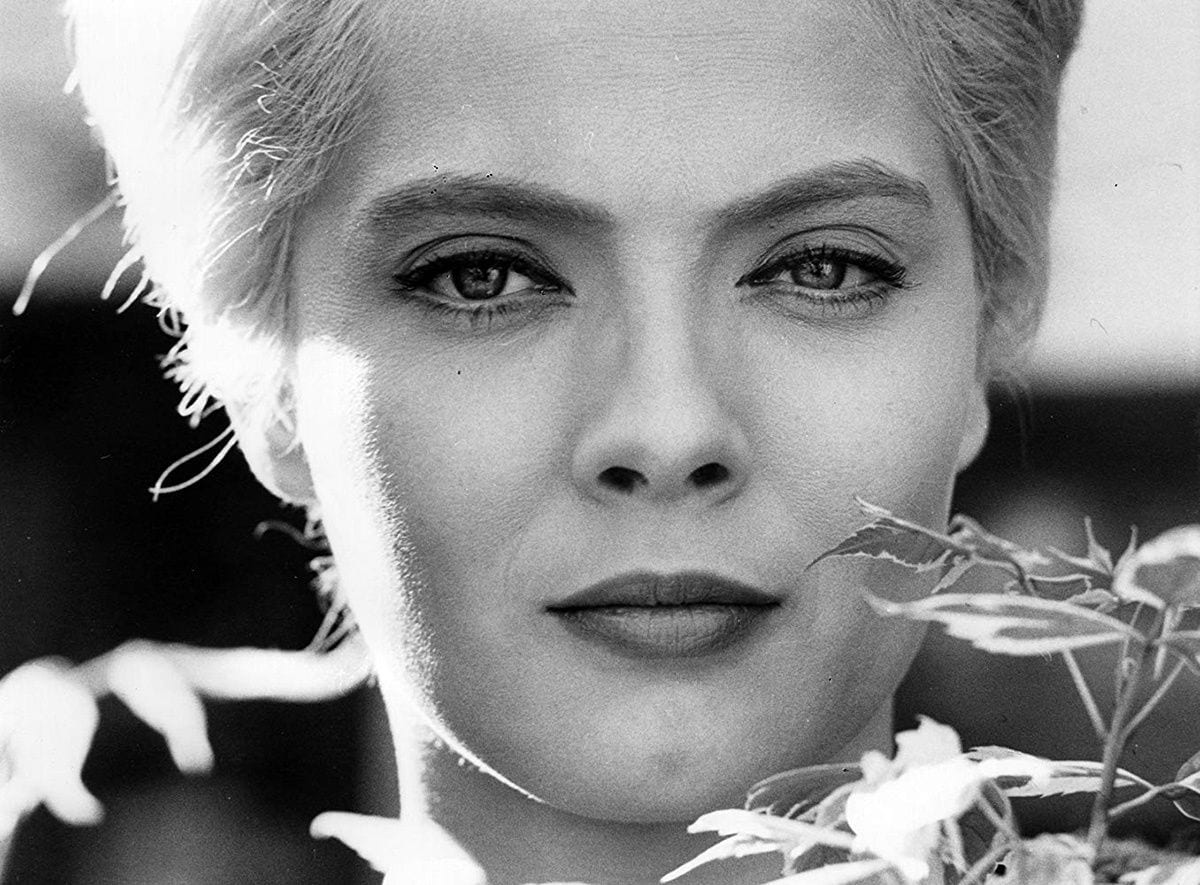Spartus Camera: Free Photos (CCO creative Commons / Pixabay)
What comes to mind at the mention of filmmaker Agnès Varda and singer-songwriter Joni Mitchell? Neither women are often thought of in the same context. This is understandable, considering the two never directly collaborated in any artistic capacity, nor did they, despite the creative nature of their occupations, work in the same industry. Still, both artists have an unexpected kinship, a revelation I experienced upon reading Issy Beach’s VICE article, “It’s a Man’s World: Why Popular Culture Left Joni Mitchell Behind,” which explores the unique dual nature of Mitchell’s legacy (8 Mar 2017).
On the one hand, Mitchell is considered one of the most important writers and recording artists of 20th century music, whose creative authenticity, unapologetic feminine sensibility, and unwillingness to pander to a commercial arena has seen her become a major role model for artists as diverse and wide-reaching as Cyndi Lauper, Taylor Swift, Sufjan Stevens, and Annie Lennox. Simultaneously, while Mitchell’s name recognition is indelible, rarely is her oeuvre understood or revered in the way it deserves to be, primarily due to the unspoken rules and aggressions of a male-dominated industry.
Mainstream radio rarely showcases Mitchell’s work in spite of its influence, and while she is understood to be something of a revolutionary in her field, rarely is she extolled in broader layperson discourse the same way Elvis Presley or the Beatles are. The aforementioned article notes that despite her “legions of appreciators”, it was “likely Joni’s female-ness that kept her from skyrocketing into stardom…sexism and misogyny towards women—in and out of the spotlight—is just never not present”. While Mitchell’s musical prowess has earned her the reputation of a legend, male hegemony within the industry has eliminated her from the shared colloquy that informs our culture and the media within it that shapes our identities and greater social awareness.
I experienced the Joni Mitchell phenomenon firsthand with my own family. Raised by two well-informed music fans, my upbringing teemed with the sounds of Stevie Nicks, Cass Elliott, Diana Ross, Regina Spektor, Billie Holiday, Sarah MacLachlan, and Diana Krall (among many others). But when I returned from my first year of college with the 1971
Blue vinyl in my grasp—and verses of “California”, “A Case of You”, and “This Flight Tonight” whirring in my head—embrace, or even recognition, was not immediate.
Silvia Monfort as Elle and Marcel Jouet as Raphäel Scotto in La Pointe Courte (1955) (Criterion)
Surely my parents had heard of Joni Mitchell, and surely they revered such an iconic name, but her music came to embody an entirely new and unfamiliar territory outside of the mainstream Top 40 sphere that had long felt so comfortable. For someone who instantly latched onto her songs, this frustrated me. But for my parents, who came of age during a 1960s and ’70s that seemingly celebrated Joni Mitchell but never actually played her music in a widely-accessible way—it was like cracking open a part of their cultural identity that they didn’t even know existed.
Agnès Varda, a revolutionary in a different art form, fills a similar space in the cultural identity. She remains another female maverick whose legacy in broader discourse is hampered with the same inexplicable duality: great reverence, yet somehow, simultaneous obscurity.
Varda in cinema, like Mitchell in music, established herself as an important and deeply-personal creative voice in people’s lives—at least the lives of people who were able and willing to access her work. Her death this past March invoked a surreal and unexpected experience from my vantage point as a film student. Some fellow cinephiles on campus mourned her passing as though they had lost a surrogate mother, memorializing her on Instagram stories and in class discussions, while on the other hand, some students barely even noticed her death, and when notified of it, responded with, at most, indifference.
For those unfamiliar with Varda or her work, she is the woman essentially responsible for the French New Wave of the late-1950s and ’60s, one of the most important movements in filmmaking history (considering its subsequent influence on, and kinship with, the Hollywood Renaissance and England’s Kitchen Sink Dramas), a revolution in cinematic storytelling that saw narrative and visual conventions long implemented by major studios upended and reinvented as a kind of creative counterculture. Unfortunately, it is here, in the infancy of her career, that Varda’s contributions begin to experience erasure.
While Varda was pioneering narrative and aesthetic techniques that would become emblematic of the New Wave in her first film, La Pointe Courte (1955) it is often Francois Truffaut’s The 400 Blows (1959) which premiered a half-decade after Varda’s debut, that is consistently misattributed as the beginning of la nouvelle vague. While Truffaut’s film is an undoubted masterpiece, its reputation in the cultural consciousness cannot be fairly elevated above Varda’s debut, nor understood outside of the context of Varda’s work. After all, she was churning out films of this ilk with little money and experience years before the men who are often credited with inventing the movement even laid hands on a camera.
This is not to say, of course, that Godard and Truffaut are undeserving of study in film schools or mainstream cultural discourse. Roger Ebert himself called Godard’s Breathless (1960) as influential a film debut as Orson Welle’s 1941 film, Citizen Kane, and this is certainly not an unfair statement (Roger Ebert.com, 20 Jul 2003). Godard’s film is a giddy, disturbing, stylish, anarchic, fourth-wall breaking, celluloid manifesto that should be widely celebrated for its insurgent artistry. But when a filmmaker like Varda is making equally groundbreaking manifestos years before Truffaut and Godard, she deserves to occupy the same place in cultural discourse that they do, not to mention the elevated credit of being la nouvelle vague‘s original pioneer.
Of course, male hegemony has erased Varda’s occupancy, and elevated credit, in the culture. It’s a sovereignty that occupies not just the film industry, but every facet of society, driven by a privilege so powerful and deeply-entrenched in our social fabric that it has distilled itself across all mediums, forums, and modes of discourse. Male dominance has become not an easily-identifiable form of oppression, but rather an invisible and all-encompassing one.
It is no wonder, then, that men-centric, male-directed films like Breathless and The 400 Blows are considered among the most important pop culture artifacts of 20th century art, while a film like Varda’s La Pointe Courte (perhaps the greatest film debut in the history of film debuts, and one of the “progenitors” of New Wave storytelling) (La Pointe Courte, The Criterion Collection) premiered at “Cannes, where it received critical acclaim but no interest from distributors,” and went without home video release or airplay for over a half-century before its 2008 Criterion release (“Agnès Varda’s La Pointe Courte on the Criterion Collection”, Andrew Chan, Slant , 24 Jan 2008).
Corinne Marchand as Florence ‘Cléo’ Victoire in Cleo from 5 to 7 (1962) (IMDB)
It is also the same reason why an artist like Mitchell, despite the paradigms she transformed, was scarcely allowed entry into the pop Top 40 (“Joni Mitchell’s Attorney Recommends Permanent Conservator”, video, Billboard“). While there is still much work to do in the arena of venerating Varda’s filmography, and the oeuvres of countless other long-neglected women artists, some action is being taken to restore her visibility. It’s a great tragedy that Varda is no longer alive to experience such praise, but said action will at least (hopefully) guarantee her name’s residency in the same breath, both in film schools and layperson conversation, as her male colleagues.
Turner Classic Movies has contributed to the cause with a recent broadcast of Cleo from 5 to 7, one of Varda’s greatest achievements. Shot in 1961 and set in the streets, alleyways, boutiques, art studios, and apartments of France, it follows pop singer Cleo Victoire (Corinne Marchand) in virtual real-time, as she waits, from 5PM to 6:30PM for medical test results that may or may not confirm a cancer diagnosis.
Cleo from 5 to 7 is everything the French New Wave is — and is not. Like Breathless, Cleo from 5 to 7 is existential and even a bit nihilistic. It is driven by themes of mortality, identity politics, and human relationships.
Shot in glossy black-and-white, its mise-en-scène is arty and ever-changing, a complicated and absorbing visual mien of darks and lights. But unexpectedly, it’s not littered with an overabundance of unnecessary jump cuts and protracted segments of pretentious emptiness. Varda’s lens manages both carefully-studied and recklessly vérité styles throughout, pushing us through Cleo’s saga at breakneck speed even as it lingers, unrushed, in a host of settings lively (the city streets and cafes), and minimal (Cleo’s spacious, white-walled apartment).
Cleo from 5 to 7 is not all style and no substance, either. In a film like Breathless, it’s often easy to get lost in the frothy abstractions (and ultimate nothingness) of Jean-Paul Belmondo and Jean Seberg’s minutes-long musings on morality, sex, and crime, all while they mug for the camera in très chic beatnik attire. Dissimilarly, Cleo from 5 to 7‘s musings are anchored in valid personal and philosophical concern that emotionally invests the viewer. Varda’s dramatic beats are calculated and forceful. And perhaps the most important deviation from the nouvelle vague films of her male contemporaries is Cleo from 5 to 7‘s feminism.
Sure, the character of Cleo is a beautiful ingenue type who is never taken seriously by her lover, her male colleagues, or even her female confidantes. But by orienting the camera to Varda’s female gaze, Cleo transitions from object to subject in a way that allows us to identify with her on an almost primal level, and cognize her strengths and complexities beneath the platinum hair and ritzy attire. We the audience are not in on the mockery of our protagonist; we, too, are at the mercy of that aggression, our director having aligned us with Cleo’s emotional and sociological circumstances.
Her voice dominates amid the noise, the anchoring logos and pathos of Varda’s narrative, making lines like “You make me capricious. Nothing but a china doll!” and “Everyone spoils me. No one loves me” register with emphatic and legitimate anguish. We come not to be critical or even analytical about Cleo’s flaws, but for once, we have an understanding of and sympathetic to them. With that newfound solidarity, “sexy” anti-heroes like Belmondo’s Michel turn into little more than babbling heads. While aRotten Tomatoes comment from Empire Magazine validates the film’s place as “one of the Nouvelle Vague’s boldest achievements,” film critic Josh Larsen notes this distinction in writing, “[Cleo from 5 to 7] stands apart from the French New Wave in that it is very much the story of a woman, not about a woman.”
This is not the case with a film like Breathless. While there’s no doubting that Jean Seberg’s Patricia grapples with issues relevant to the female experience (pregnancy, sex, relationships, work, etc.), Godard’s perception of her is a chilly and often objectifying one, rooted in Michel’s problematic gaze. Patricia is his clay to mold, and even when the tables are turned in Breathless’ dénouement, we do not suddenly feel positive about Patricia, nor aligned with her motivations. Instead, we leave the theatre feeling dirty about both of our protagonists. Perhaps this is Godard’s intent, an acute subversion of the logical and fully-realized “happy ending”.
Cleo from 5 to 7 , however, does not operate in this way. It’s a film that embraces the ecstasies and agonies of the female experience, and seeks not to lionize nor indite the character of Cleo, but to simply present her for who she is, without sway. Occasionally narcissistic and even materialistic, she can exhibit a sense of neediness, confusion, exhaustion, melancholy, and even of privilege. It is no secret that Cleo, being a successful recording artist, lives on society’s upper crust. But at the same time, she is an extremely intelligent woman. Contemplative, sensitive, resilient, and courageous, she is the film’s beating heart, an unlikely but always involving heroine.
Breathless‘s significance is indelible, but there is no doubting the almost cartoonish and archetypal nature of its people. Cleo Victoire, on the other hand, is not open to parody, or even essentialization. Varda subverts tradition by presenting us with a protagonist who is, without shame, wholly and transparently human.
The key to understanding and documenting Cleo from 5 to 7‘s place in the pop cultural firmament is through continued exposure and discussion. This is a cause TCM has contributed to with its recent airing, and an effort Boston’s Coolidge Corner Theatre will also aid with its celebration of the film this coming September. There is still much ground to cover, however, in ensuring a film like Cleo from 5 to 7 is cemented where it deserves to be, in the pantheon of cinematic “essentials”. As critic Matt Bailey notes on Rotten Tomatoes, “Why Agnès Varda’s Cleo From 5 to 7 is not considered a classic of the French New Wave on the order of Truffaut’s The 400 Blows or Godard’s Breathless is a complete mystery.”
In a vacuum, it certainly is a mystery; notwithstanding their brilliance and individual importances, myriad other New Wave works of the early ’60s pale in comparison to Cleo from 5 to 7′s filmmaking and storytelling prowess, which even, according to Rotten Tomatoes‘ laudatory consensus, stands apart in its “encapsulat[ion] of the appeal of the [French New Wave]” and simultaneous divergence “from its narrative conventions”. When contextualized, it becomes clear why Cleo from 5 to 7 has fallen into mainstream obscurity and films like Breathless and The 400 Blows have enjoyed magnum opus reputations. It is because, as VICE noted in its article about Joni Mitchell, it is a man’s world.
Is it possible to be an icon and still be, for lack of a better word, unknown? Yes—an artist like Agnès Varda has managed to accrue such a reputation. Her name is iconic, because her talents are undeniable. Even when stripped of context it would be simply impossible for her to occupy a space less revered than that of her contemporaries. But she is largely unknown. While dominating social forces may not manage to topple Varda from her well-deserved pedestal in academia and high art, they still dictate her place in the media that defines our broader pop culture landscape.
It is a landscape controlled by capitalistic saturation and a deeply-entrenched machismo ethic. It might not be powerful enough to erase Varda’s genius, but it’s certainly shameless enough to eliminate her from our common discourse. Varda is thus trapped in a kind of cultural purgatory, where everyone may know her name, but rarely will they enjoy her full body of work. It is up to us, as descendants of the digital age, where academia and high art can be easily distilled across the landscape, to share, champion, and keep accessible a remarkable filmography too long under-appreciated by the greater public. If we are able to do that, maybe one day pop culture will retrace its steps and pick up Agnès Varda where it left her, and carry her forward.
- TIFF 2017: 'Faces Places' (Visages Villages) - PopMatters
- One Sings, the Other Doesn't
- The Beaches of Agnès (Les plages d' Agnès)
- Cleo from 5 to 7 (film review) - PopMatters
- Color Snapshots: Agnès Varda in California
- When Jane Met Agnès: Two Films by Agnès Varda - PopMatters
- Agnes Varda by Rebecca J. Deroo (book review) - PopMatters
- Agnès Varda's One Sings, the Other Doesn't
- Abortion and Difference Feminism in Agnès Varda's One Sings ...




